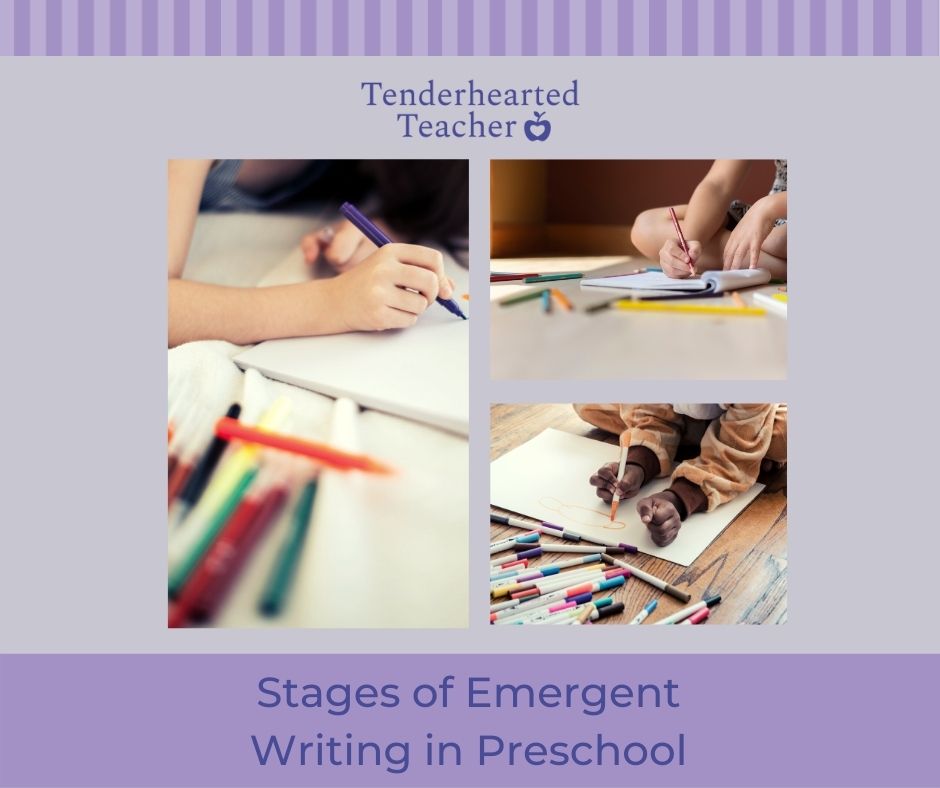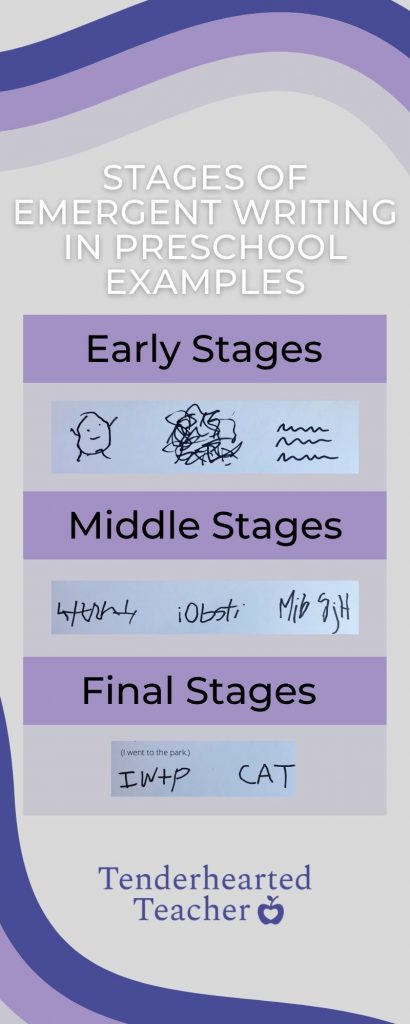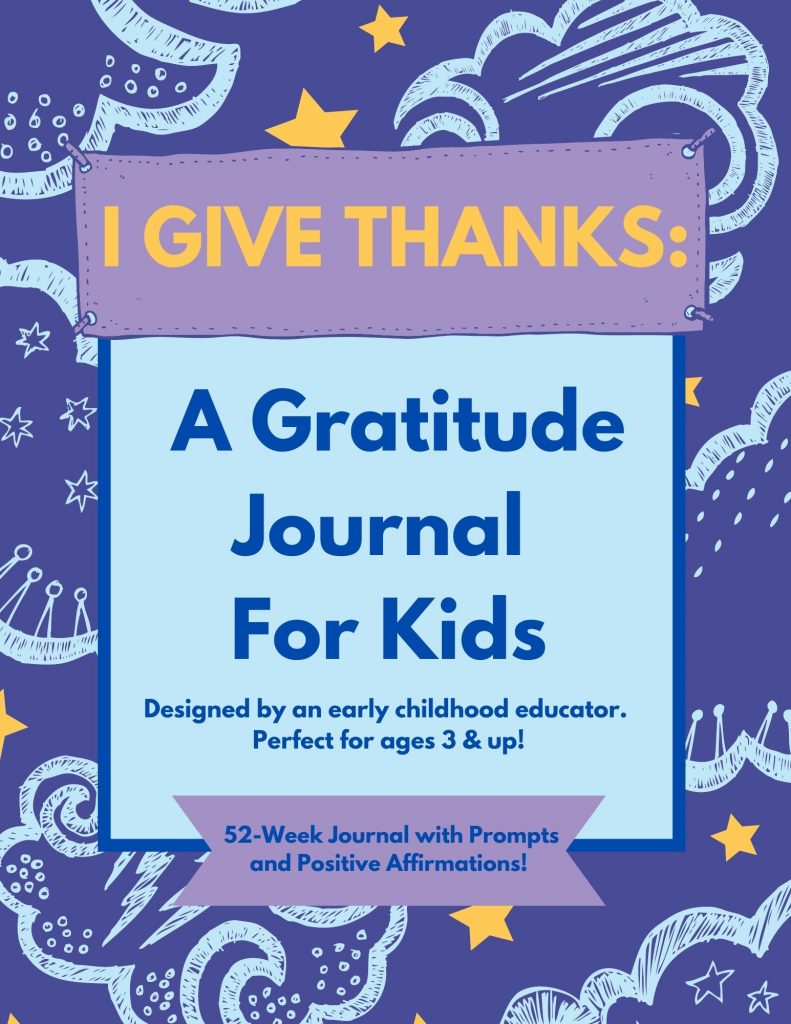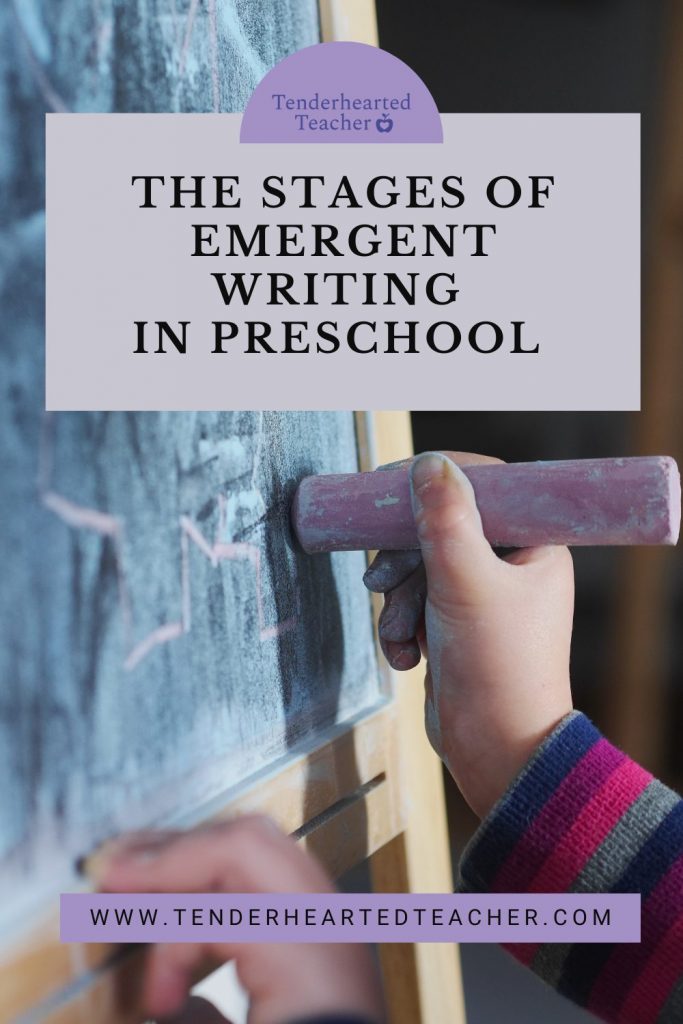
One day when I first started teaching in my own classroom, I had a substitute teacher ask me why I was complimenting my preschoolers’ writing because it was “all just scribbles.” The question struck me as odd and frankly a little bit rude. But then I realized it wasn’t meant to be rude at all. In fact, I think she was genuinely curious as to why I might be praising the work. You see, she was a former high school teacher who started substitute teaching in her retirement. So, working with young preschoolers in an elementary school wasn’t her area of expertise. She wasn’t aware of the stages of emergent writing in preschool.
Writing Happens in Stages
When you earn your degree in early childhood education you become well-versed in emergent writing. Or in other words, the natural progression of writing in young children. But, most people aren’t familiar with these stages of development. So, it’s not surprising to hear questions like, “is it okay that my 4 year old writes his letters backwards sometimes? Or “My child only draws pictures, but hasn’t tried writing any letters. Should I be worried?”
Think about it this way, a human baby doesn’t come out of the womb ready to walk. First, that newborn will start strengthening its body with tummy time. Then as it gets stronger it will begin to roll and to sit. Then it will crawl and eventually it will walk. It works the same way with writing because writing happens in stages.
How does Writing Develop in Young Children
Before we dive into what each stage looks like, it’s important to remember that not all children develop at the same pace. Several factors can impact a child’s path through these stages, i.e. their age, cognitive ability, fine-motor development, letter-sound knowledge, etc. Therefore, the stages introduced below are meant to be a guide. This guide may help you understand how writing typically progresses in children from approximately two to eight years old.
Additionally, it’s important to know that children begin to learn about reading and writing by observing the world around them. Over time they will begin to understand that words have meaning and writing conveys messages. Therefore, it’s imperative that caregivers model writing in front of their child, as well as provide opportunities for their child to practice writing.
It should also be noted that if you were to research the stages of emergent writing online you may see the categories broken down differently depending on the resource. Therefore, here is a simple summary of what the stages typically look like. I’ve compiled this using information from Head Start: Early Childhood Learning and Knowledge Center.

So What Are the Stages of Emergent Writing?
In the earliest stages of writing, a child will draw “pictures,” scribble, and then use mock-handwriting (write in a way that mimics real writing, i.e. left to right.) Children as young as two will often try writing in the way they have observed others write.
In the middle stages, the child will begin to make random letter-like formations (or shapes that resemble letters.) Then those letters-like formations will be grouped together to create what appears to be words in letter strings. Eventually children will even begin to copy words that they see around them in the environment (check out my blog post about environmental print here.) In this stage it’s common for letters to be written backwards or even upside down.
In the final stages, children begin to use invented and then phonetic spelling. So for example, they may start by writing down the first letter of the word to represent the entire word, i.e. “ILB” for “I like bananas.” After that stage children begin to write words using their beginning, middle, and ending sounds, as well as some short phrases. And the final stage is when a child uses the correct spelling of a word and begins to use punctuation and upper and lowercase letters correctly as well.
Simple Strategies to Promote Your Child’s Early Writing
Since you now know that writing happens in stages it will be easier for you to recognize your own child’s progression. In addition, it will be easier for you to promote your child’s writing development at home. Here are a few writing tips I provide in my free Literacy in Early Childhood Guide.
- Model writing in front of your child to demonstrate that writing serves a purpose. For example, say, “We write milk and eggs on the list to help us remember to get them at the store.” Have them pretend to write lists and messages also.
- Allow your child to write with a variety of utensils, such as crayons, pencils, pens, and markers. Using varying levels of thickness and length is also ideal, i.e. fat vs. skinny crayons, short vs. tall pencils, etc.
- Focus on the process rather than the product. Encourage them to write independently and praise them for the efforts, i.e. ” I love that you are trying your best! Show me again how you tried to make a line.”
- Please note, that before a child can write, or even correctly hold a writing utensil, they must develop their fine-motor coordination. Here are some simple activities to build hand and finger strength to prepare them for a future of writing: peeling stickers, tearing paper, and using play-dough or shaving cream to make letters, numbers, and shapes. Also, allow your child to write while sitting down, laying on their bellies, and standing upright at a wall or easel. Writing in different positions helps to develop a child’s overall core strength which is important for handwriting as well.
Additionally, you can promote your child’s writing development as well as encourage them to practice gratitude with this journal I’ve created specifically for kids.

Now talk to me! What writing stage is your little one in? Please share your comments or questions below.
Reference: Head Start: Early Childhood Learning and Knowledge Center. (2021, February 12). Emergent writing. ECLKC. Retrieved September 28, 2021, from https://eclkc.ohs.acf.hhs.gov/video/emergent-writing.
SAVE TO PINTEREST




This article was so cool! I loved how approachable and easy to understand it was and can’t wait to implement some of the tips you recommended.
Thank you so much for your kind words! I really appreciate your comment. Please let me know if you do implement any of the strategies. I’d love to hear how they work out for you. Also, be sure to check out my Free Guide for even more early literacy tips too: https://tenderheartedteacher.ck.page/literacyfreebie
I really enjoyed this and I like your way of writing.
Thank you so much for your comment. I appreciate the compliment very much!
This is a great read. I have two kids with a wide spread in age so I got to see this with my son without even knowing it had a name to it and now I’ll get to see it with my daughter powered with a little more knowledge in how to help her along. It was be great if all parents knew if the activities they could start at home.
Thank you so much for your comment. I appreciate it. I agree with you and that’s one of my biggest motivations with this blog. I want to be able to provide parents and caregivers with resources that can help them understand early childhood development, as well as provide strategies and tips to help enhance their child’s learning.
Wow this was so informative. Although I don’t have kids, it was eye opening and the photo example of the stages of writing really helped. It’s also clear how passionate you are about kids and teaching. Great job 🙂
Thanks so much for your comments! I really appreciate the compliments!